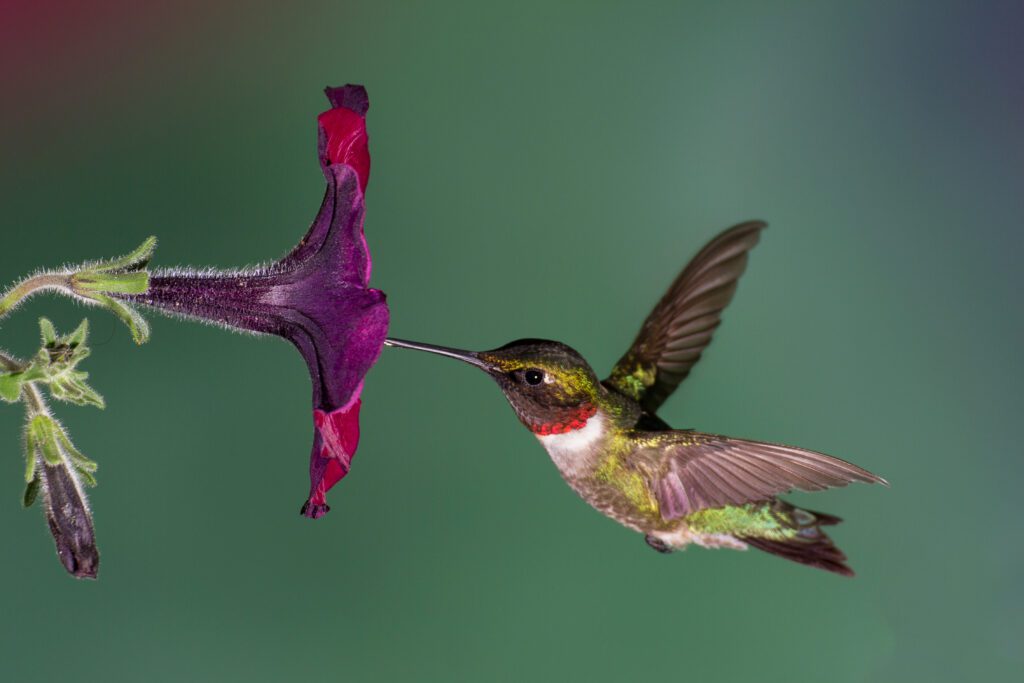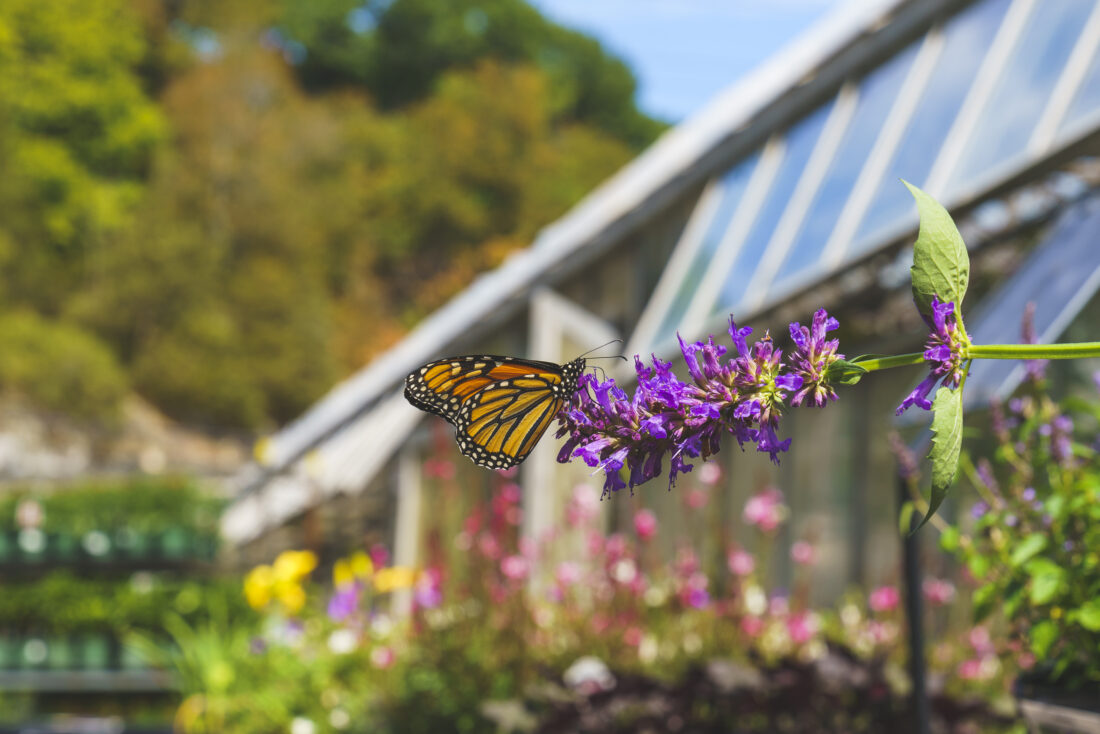June 19, 2023
Make Room for Pollinators in Your Garden
The world would be a very different place without pollinators, in fact, it would be unrecognizable. Pollinators are animals that visit flowers to drink nectar or feed off pollen and transport that pollen from place to place along their way. They not only pollinate our food crops and flower gardens but sustain our environment, supporting healthy ecosystems that clean the air, support wildlife, protect us from severe weather, and help sustain soils.
Up to 90% of flowering plants around the globe rely on these animals for pollination. That is why the decline of pollinators is so alarming. Pollinators are threatened by habitat loss, excessive and improper use of pesticides, and Colony Collapse Disorder (CCD). Pollution and climate change also contribute to the decline. It’s up to us to do our part to nurture pollinators in our landscapes. Read on to learn about different types of pollinators and how you can support them!
BEES
Approximately a third of the food eaten by Americans today comes from crops pollinated by bees! And some plants, like tomatoes and blueberries, though self-fertile, won’t release their pollen unless they experience the vibrations of the wings from certain bees. Planting colorful annuals around your vegetable garden will invite pollinators and increase your yield in the vegetable garden. Bees contribute to a healthy and beautiful landscape by pollinating some of our very favorite flowers.
Bumble bees form small colonies, usually underground and feed on a wide range of plant material from spring through fall. Solitary bees do not form colonies, as their name suggests. They nest in decaying wood, in sandy areas, in the soil and under leaf litter. Solitary bees include carpenter bees, leafcutter bees, mason bees, digger and cactus bees. Support their habitats by supplying pieces of deadwood and try not to remove all the leaf litter from your yard.

BUTTERFLIES
Creating a butterfly garden is fun, creative, and oh so rewarding! Plants are critical to butterflies, both as a food source and as a place to lay their eggs. When designing a butterfly garden, keep the following in mind:
FOOD
In terms of food, adult butterflies are looking for flowers from which they can drink sweet nectar (and spread pollen in their wake). These grown-ups aren’t all that particular about the flowers they choose. If it looks nice and smells nice to you, butterflies will probably like it too. They like flowers that provide a good landing platform, often those with a single row of petals. And bear in mind, some recent introductions of double-flowered versions of single flowers, are often sterile, offering no food to pollinators.
On the other hand, caterpillars, the larval stage of butterfly development, are a lot like human toddlers. They are very picky eaters, and each species has its very own favorite food that it will eat exclusively. For example, milkweed is the exclusive host plant of Monarch butterflies. Eggs are laid on the underside of milkweed leaves and the emergent caterpillars then eat the plant’s leaves. This is their only food source.
WATER
Wet, muddy areas provide moisture and minerals butterflies need to stay healthy. They like a shallow watering hole in the ground and will also drink from a bird bath. Adding a stone at the edge of the bath will help to keep them from falling in.
SPACE
Butterflies need a safe place to eat and nest. Butterflies love to bask! Open areas such as flat stones provide an ideal spot for basking in the sun, as do flowers placed in full sun and protected from the wind.
Pollinator Favorites List
MOTHS
Moths are not as colorful as butterflies and are recognizable by their antennae, which are feathery or saw-edged, as opposed to butterfly antennae, which have a bulbous swelling at the tip. Moths mostly work at night collecting pollen. They are attracted to strong, sweetly smelling flowers that are open late afternoon or night and usually white or pale in color. Moths are the ones pollinating your moon garden!
BEETLES
Seeing beetles in your garden probably isn’t as rewarding as seeing a colorful butterfly or bird. They are not as efficient as other pollinators and can leave a mess, damaging the plant parts they eat. But believe it or not, beetles were pollinators before bees evolved on the planet! Beetles tend to be attracted to large, strong scented flowers and are the only insect responsible for pollinating our beloved magnolias!
FLIES
Flies pollinate primarily small flowers that bloom in shady, moist areas. They are important for a range of annual flowers and bulbs.
HUMMINGBIRDS
Hummingbirds are the primary birds to play a role in pollination. They carry pollen on their beaks and feathers from stop to stop. These avian wonders are attracted to bright colored, tubular flowers. You can help these amazing creatures to find your yard by providing sugar water in a hummingbird feeder early in their migration season before their favorite flowers come into bloom.

A ruby-throated hummingbird flying into a petunia flower.
Everyone can have a positive effect on the pollinator population by providing food, water, and shelter. And remember, native pollinators are best supported by native plants! Plants native to New England are well adapted to our climate and soil conditions, making them low maintenance too.
Pollinator gardens can be as small as a decorative planter on the porch, to a flowerbed, to a large vegetable garden. Pick a variety of trees, shrubs, perennials and annuals that bloom from spring through fall to provide food and habitat sources throughout the year!
Mother Nature is a wonder to behold. Best of luck in your endeavor to help our pollinators. They will thank you.

